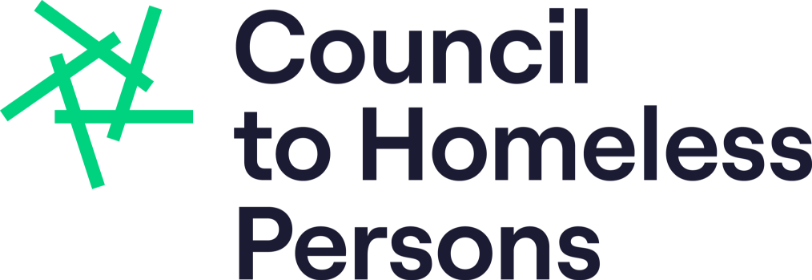In 2021, Victoria stands on the precipice of an enormous opportunity to end homelessness. After an historic investment into social and affordable housing last year, the priority is now to orient support to where it’s needed most, to help prevent and end homelessness in our state. This blog post summarises the recommendations in Council to Homeless Persons’ state budget submission 2021–22, with five priority areas.
Victoria’s State Budget
Last year’s budget saw the Victorian Government commit to an historic $5.3 billion investment for social and affordable housing, which will generate 9,300 social housing dwellings and 2,900 affordable housing dwellings over four years.
As the Big Housing Build is implemented, Victoria is poised to reduce homelessness. However, sustaining this reduction will require a continued supply of social housing – remembering that currently Victoria has the lowest level of public and community housing stock in Australia at 3.2 per cent of all households.
As well as social housing, longer term supports that keep people well, and better prevention to stop new entries into homelessness, are also required if we are to achieve the biggest possible reduction in homelessness in Victoria.
Ahead of the Victorian State Budget, here are five priority areas that could help end homelessness in our state.
1/ Assisting the most vulnerable Victorians
Last year, as Victorians followed public health advice to “stay at home” and stop the spread of Covid-19, almost 4,000 former rough sleepers took refuge in hotels. The Victorian Government then implemented the Homelessness to a Home initiative, which provided stable housing and support packages to hotel residents with the aim of breaking the cycle of homelessness.
Homelessness to a Home, alongside the programs initiated under the Victorian Homelessness and Rough Sleeping Action Plan (VHRSAP), are making great inroads towards the goal of ending rough sleeping in Victoria.
However, funding for the VHRSAP is due to lapse in the next financial year. To sustain and build on the results seen so far, the upcoming budget must secure and expand on these programs.
2/ Preventing and addressing youth homelessness
Responses to youth homelessness must be tailored and adaptive to reflect the unique situations of young people without a home, to support them on their path to adulthood.
For many young people experiencing homelessness, they are spending time away from the family home because of family conflict, but don’t want to have a complete break of family ties. In these cases, specialist youth homelessness prevention workers could help young people to locate a supportive place to stay (with friends or extended family), provide the young people and their families with tools to navigate conflict, and foster reunification where safe.
For other young people, returning to the family home is not a safe option. In these cases, consistent care and guidance over the long term is essential, yet such support is rarely available in the current system. Increasing the availability and duration of case management is an essential first step, along with flexible approaches to housing. This should include income supports and affordable housing for young people ready to live independently, and supported accommodation options for those with more complex needs.
3/ Continuing Private Rental Assistance
The Private Rental Assistance Program (PRAP) is designed to support people at risk of homelessness to attain and sustain tenancies. It is often used to rapidly rehouse women and children fleeing violence.
Funded to support 6,000 households per year – but reaching many times that number of households – PRAP is due to lapse in July. However, as Covid-19 emergency measures have been withdrawn and tenancies facing increased risk, an increase in demand for homelessness services is already becoming apparent.
Expanding PRAP to meet the projected increase in need would help to combat both coronavirus rental debts and family violence-related homelessness in our state.
4/ Creating housing equality for LGBTIQ+ Victorians
LGBTQ Victorians* experience homelessness at almost three times the rate of the general population, and are more likely to present with significant complex needs, including childhood trauma, abuse, substance misuse, poor mental health, and suicidality.
Despite this extremely high level of need, Victoria has very few services and programs specifically working with this population.
LGBTIQ+ people experiencing homelessness deserve housing and support that champion respectful communication, cultural safety, and appropriate support. This includes specialised responses, dedicated housing options, and peer support workers, to make a real difference in the outcomes for LGBTIQ+ people experiencing homelessness.
Enabling people to access programs, services, and accommodation whatever their gender identity and sexuality must be the goal of an equal society.
5/ Growing Aboriginal Community Control
One in six Aboriginal and Torres Strait Islander Victorians seek help for homelessness each year. Yet, there are very few Aboriginal Community Controlled Organisations (ACCOs) funded to deliver homelessness responses.
The Victoria Aboriginal Housing and Homelessness Framework Mana-na worntyeen maar-takoort (Every Aboriginal Person Has a Home) describes a pathway to grow Aboriginal Community Controlled responses to homelessness. However, it can only be implemented with funding.
CHP is calling for 10 per cent of all new housing and homelessness funding to be in Aboriginal control, including initiatives in this budget submission. This funding is critical to begin implementing the recommendations from Mana-na worntyeen maar-takoort, and to support Aboriginal and Torres Strait Islander Victorians experiencing homelessness.
Victoria’s state budget will be delivered on Thursday 20 May 2021. Follow the conversation #vicbudget. For more information, read the full Council to Homeless Persons state budget submission 2021–2022.
*Where a subset of LGBTIQ+ is used in this article, it is because relevant studies have focused on these cohorts. It is not intended to exclude LGBTIQ+ people from the recommendation.

